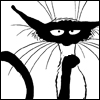Collectors Corner Spatterware and Spongeware
By Michele Alice
EcommerceBytes.com
October 20, 2013
Though the terms Spatterware and Spongeware are today often used interchangeably, they originally referred to differing methods of decorating pottery.
By the early 1800s, the Industrial Revolution had been underway for almost half a century, but mass-market pottery was still being decorated by hand. Spatterware made its appearance in Staffordshire, England, as a relatively inexpensive means of decorating everyday dinnerware - plates, cups, saucers - and serveware, like pitchers and platters, primarily for export to the United States.
The process, though not as laborious as painting individual dots, creates an effect resembling a densely freckled surface. Patterns included rainbow stripes - the more colors the better! - and rim bands surrounding plain areas on which were hand-painted images of birds, flowers, and other popular motifs.
Spongeware proved to be even less expensive to produce as all that was necessary was a sponge or piece of cloth, dipped in paint, and then daubed on the surface of the ceramic. The daubs could cover the entire surface, or, as with Spatterware, they could serve to frame a painted image. In addition, the sponge could be cut into a pattern, such as a flower or star, and used like a stamp to create a repeat design.
Both Spongeware and Spatterware proved to be particularly popular in the States, especially among groups like Pennsylvania Germans who appreciated the inexpensive, yet colorful pieces, and factories soon sprang up to produce the wares, many with American motifs.
Today, collectors are attracted not only by the variety, but by the handmade, folk-art quality of the designs - no two pieces are exactly alike. Many pieces have survived and are consequently quite reasonable, but expect to pay premiums for rarities and especially nice specimens. For example, blue and white Spongeware is particularly popular in the U.S., and rare specimens can sell for several hundred dollars, while Rainbow Spatterware is hugely dependant on the number of colors exhibited, and specimens having five, six, or more colors, or unusual color combinations can fetch several thousands at auction.
By the way, Spongeware and Spatterware are still being produced by such companies as Bennington Potters in Vermont and by the Emma Bridgewater Factory in England, so it is possible to buy new for everyday use.

Login to Your Account





 Reply With Quote
Reply With Quote